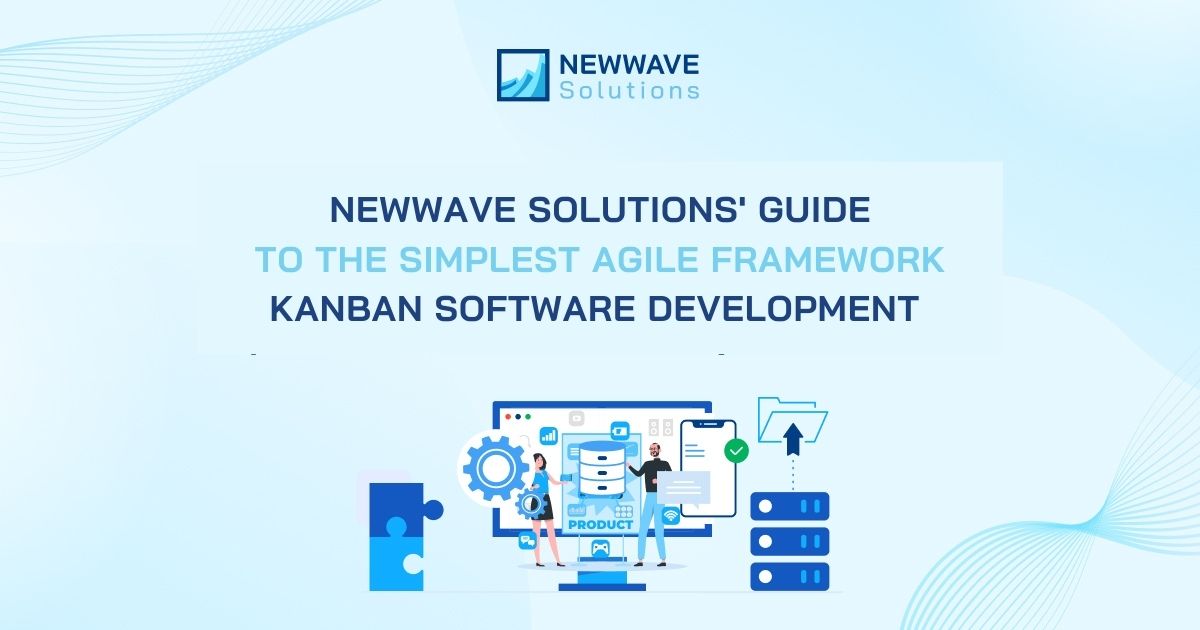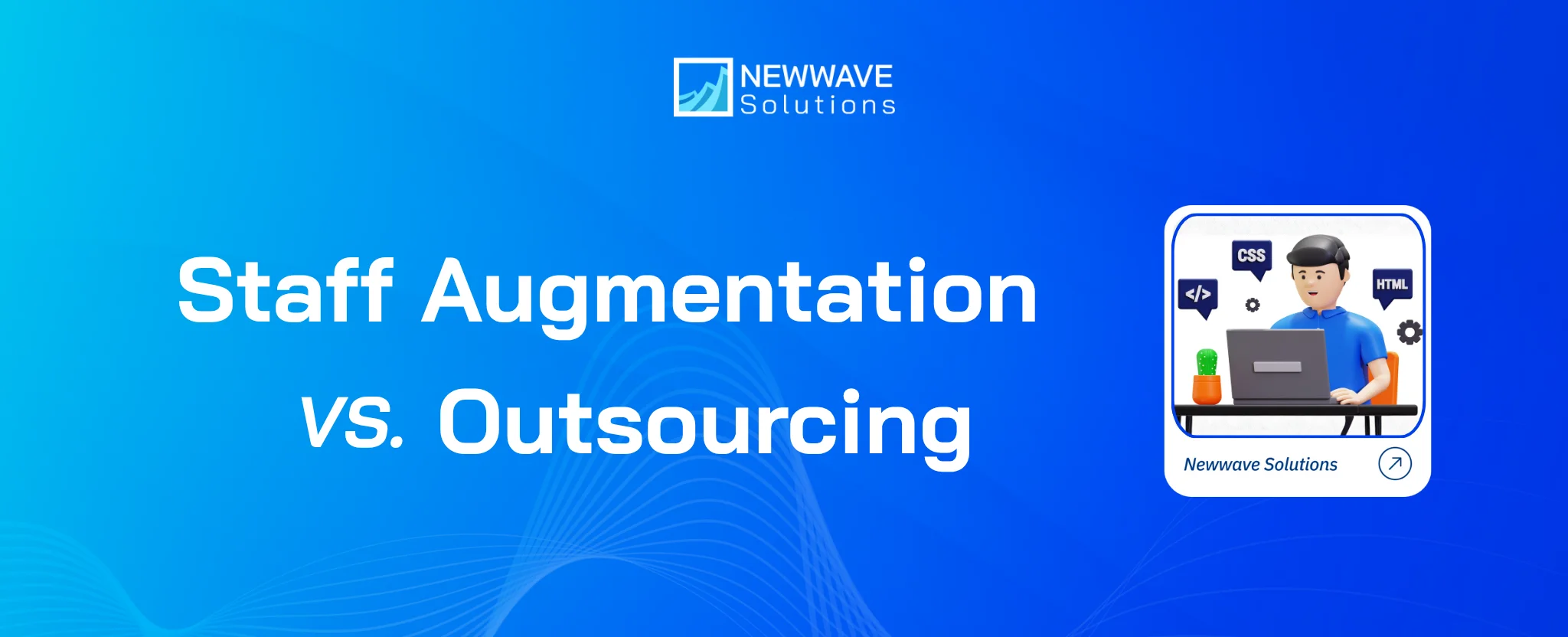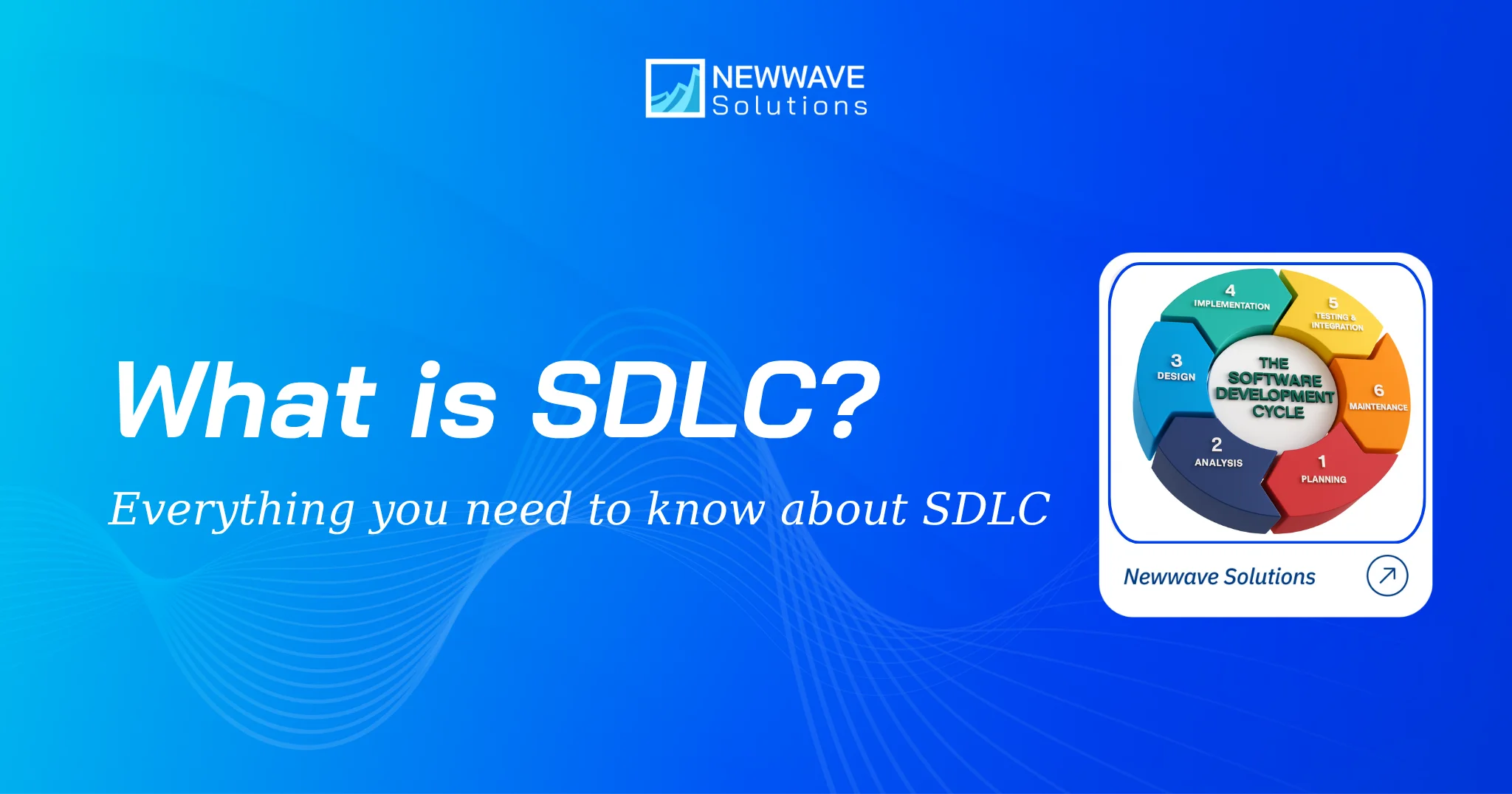Newwave Solutions’ Guide to the Simplest Agile Framework: Kanban Software Development Model

Visualization of the software development process and value creation in each phase is an essential part of Kanban software development model.
Scrum – the method of timeboxing, rules, and strict role assignments to ensure timely delivery of batches of work – used to be the most popular agile approach until Kanban was developed in the late 1940s by a Japanese engineer named Taiichi Ohno. The main reason is the development sought a workflow management method that increases the flexibility and adaptability to market changes while keeping the development keep moving forward.
Kanban is believed to be the solution that strikes a balance between discipline and adaptability, allowing them to effectively meet market demands through the visualization of the entire project on board to increase project transparency and collaboration between team members.
Developers said that Kanban is one of the simplest frameworks yet allows projects to efficiently manage and keep track of development projects while at the same time compatibility with the existing organizational setting. Let’s take a closer look at Kanban Methodology.
1. What is Kanban Software Development Model?
The initial concepts of Kanban were first developed due to the desperation of Toyota – a Japanese manufacturer- to compete with Western companies in the midst of an economic downturn. They started experimenting with a system that processed small amounts of raw inventory quickly – later known as just-in-time manufacturing- and successfully outperformed competitors and established a sustainable advantage over decades.
The principles of this method are clearly defined processes with distinct steps, small batch sizes, optimizing continuous flow-limiting work in process, and elimination of waste that had been widely applied across industries around the world to reduce waste and improve sustainability and profitability.
The modern Kanban methodology for software development is rather different from the physical assembly lines of Toyota. The primary difference is that it works with the knowledge inside the minds of developers rather than physical products or raw materials. However, the visualization process is still the value creation of the Kanban software development model. While this is easy to do on an assembly line, it is much harder in software development.
2. Kanban 101: Everything You Need to Know about Kanban Software Development Model
The balance of discipline and flexibility are the results of the following four basic elements – Visualization, Limit Work in Process, Focus on Flow, and Optimizing Continuous Improvement.
- Visualization
Making a Kanban visualization board is the first step toward the software development process. It should include a visual image of all works and workflows throughout the process. The project team must understand and visualize the distinct steps to move the project from “To Do” to “Done”. The typical steps for your references are Collect Requirements of Project Owners -> Design -> Implementation -> Quality Assurance -> Deploy -> Maintain/ Upgrade. Besides, the project team must visualize the piece of work (Kanban card) as it goes along the process, the blockers, bottlenecks, and queues.
This form of collaboration instantly leads to increased communication, collaboration, accountability, and transparency across the team. This is critical for software development teams, which require strong coordinated efforts to achieve common goals.
- Limit Work in Process
It is common for project teams to get overwhelmed with their long list of to-dos – developing new features, fixing bug fixes, maintenance work, etc. It is important that they realize, and finish prioritizing work in a disciplined, methodical way. That is when the Kanban software development model comes in and resolves such problems. Limiting work in process is an important concept in the Kanban software development process. To be specific, it limits unfinished work that is in the process to avoid problems caused by task switching and re-prioritize items. In addition to that, limiting WIP can help the project move faster, reduce error, and more effectively.
- Focus on Flow
Flow is the way development tasks move through the Kanban system. In case, the tasks can move in a fairly linear path, from one step to another with minor delay, it is a good flow. If tasks stop and start abruptly, time is wasted in waiting or moving on without significant progress, it is a bad flow.
To optimize flow, using limit Work in Process is the first step then the whole team must work to keep each piece of work moving forward. Questions that should be considered constantly are what to do to reduce existing cards on the board. Is there anything to do to finish before pulling up the next card? Which are the things that have been in the same place for over a day? How to get it moving?
Another strategy is creating rules such as WIP limits on each lane, to prevent bottlenecks, rules to handle blockers, criteria before a new card can be pulled into an active lane, and so on. If the workflow can be optimized, it helps the project stay productive, efficient, and evolving on the path of continuous improvement.
- Optimize Continuous Improvement
Kanban is a system of evolution, but it does not mean forcing a complete change of everything that exists. A Kanban system should reflect a reality in which Kanban methodology highlights the importance of designing a board that accurately reflects the current process. Based on this, the project team carefully practices continuous improvement, a perpetual process of making small, meaningful changes that help the project outcomes for efficiency. On the Kanban board, opportunities for practicing continuous improvement will present themselves. Implementing these changes one by one and measuring the impact could maximize their impact on the whole project.
3. Scrum vs. Kanban Software Development Model
Once the agile approach is chosen for software development, the next step is to select a process methodology. Scrum and Kanban are the most popular agile processes. While the Kanban software development model is continuous and more fluid, the Scrum framework is based on short, structured work sprints.
In many cases, the project starts with Kanban software development model because it’s relatively easy to explain and implement based on the visualization board. In Kanban, a piece of software development works as a fan-in and fan-out process where the project team pulls user stories from an intake board and moves them through a workflow until they are marked “Done”.
There are also cases where projects start with Scrum which means tasks are organized in sprints and implemented in 1 to 2 weeks. The project team goes through all the requirements as user stories, then prioritizes them in a backlog based on the business value and categorizes them into each sprint to complete. Standard meetings would help the project team identify sprint priorities, work to complete during each sprint, testing to ensure success, and plan for the next sprint.
Let’s take a closer look:

4. Final Thoughts
Scrum and Kanban software development models are distinct and useful agile software development models that suit many types of projects. Regardless of what you choose, stick with it, you’re well on your way to agile bliss.
However, to choose a suitable one, you don’t need to be so black and white. In fact, there are cases where project teams use hybrid models influenced by both Scrum and Kanban software development models. An experienced project manager would help the project team to choose the Agile features that fit each stage, whether that’s Scrum, Kanban, or a mix of both.
What if you still don’t know what to choose between Scrum and Kanban software development models? Newwave Solutions with its teams of experts are always willing to lend you an extra hand. Contact us now!
To Quang Duy is the CEO of Newwave Solutions, a leading Vietnamese software company. He is recognized as a standout technology consultant. Connect with him on LinkedIn and Twitter.

Read More Guides
Get stories in your inbox twice a month.
Let’s Connect
Let us know what you need, and out professionals will collaborate with you to find a solution that enables growth.




Leave a Reply